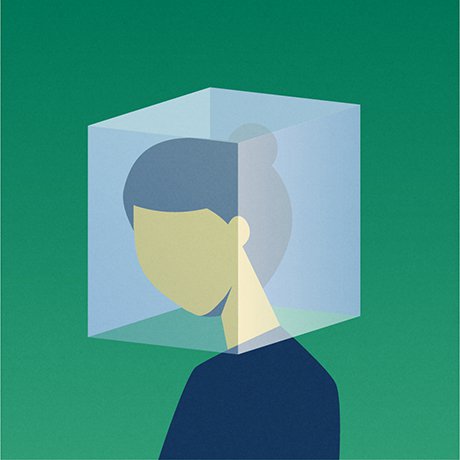
Post-COVID-19 headache may result in a more complex spectrum of cases referred to headache clinics
Headaches following cases of coronavirus disease 2019 (COVID-19) have been reported to affect between 47–53% of patients,1,2 with persistent headache symptomatology now being considered as a possible chronic sequela of COVID-19.3 Headaches associated with COVID-19 are likely to be resulting in an increase in referrals to specialist outpatient headache clinics, with clinicians now seeing a more complex spectrum of patients with different headache types.4
Impact of post-COVID headache on specialist headache clinics
The emergence of post-COVID-19, or long COVID-19, syndrome has resulted in an increasing number of patients experiencing headaches,2,5,6 many of whom require referral for specialist care.4 Indeed, specialists have indicated that they are seeing a rise in the number of patients visiting their outpatient headache clinics due to worsening of previous headache conditions, or new-onset headaches, following COVID-19.4,7 Outcomes from one cross-sectional study of patients interviewed by phone or video indicated that new-onset headache following discharge from hospital was significantly more common in COVID-19 patients compared with the control group (39.1% vs. 2.7%; p=0.001).8
As a result of this, clinicians are now seeing a more complex group of patients presenting with different headache types than those seen before the COVID-19 pandemic.4,7 These patients may require different management approaches, and the presence of specific other post-COVID-19 symptoms, such as insomnia, dizziness, memory loss or fatigue,4,5 may not only affect headache prognosis, but also could provide clues regarding the pathophysiology of post-COVID headache in an individual.4
Characteristics of headache types referred to specialist headache clinics post-COVID-19
There are limited data on the characteristics of patients with post-COVID-19 syndrome presenting at headache clinics. However, one recent report has summarised some of the migraine-like headache phenotypes that have been seen in their clinic.4 These include chronification of migraine, in which a patient with a history of low frequency of migraine episodes pre-COVID-19 developed constant headache pain, characterised as being frontally located, throbbing in quality, with a moderate-severe pain intensity that persisted after the infection had resolved. A second case study described a patient with long-lasting headache associated with COVID-19, without previous migraine.4 This patient developed a headache of moderate severity and tightness/pressure during the acute phase of infection, characterised by episodes of throbbing pain with photophobia, phonophobia and nausea.4 The final case described a patient with delayed onset COVID-19 headache without migraine history.4 This individual developed late-onset migraine-like headaches characterised by throbbing pain that worsened with movement when respiratory symptoms began to improve.4 The headaches increased to a constant daily frequency although the patient was still able to distinguish severe-migraine days from milder ones.4 Each patient had different presentation of symptoms during and after infection with SARS-CoV-2, the virus responsible for COVID-19, and as such required quite different treatment approaches to improve their headache symptoms.4 Interestingly, similar reports of an increase in the frequency of referrals for worsening and new-onset headache have been described at other centres,7 with approximately 60% of patients who developed de novo headaches post COVID-19 having a migraine phenotype.7 The authors also reported that, in patients with pre-existing primary headache disorders (88% of whom had migraine),
post-COVID-19 headaches were significantly more intense and frequent, and required an increase in analgesic use compared with those experienced prior to SARS-CoV-2 infection.7
Challenges of managing post-COVID-19 headaches
The different subtypes of migraine-like headaches that can present in patients who have had COVID-19 highlight the complexity of managing post-COVID-19 headaches.2,4,7 First, there is a need to distinguish headaches that result directly from SARS-CoV-2 infection from those that are due to a secondary cause, as well as determining whether a post-COVID-19 migraine represents a worsening of an existing migraine condition or onset of a new condition triggered by SARS-CoV-2.2 A better understanding of the differences in disease mechanisms between types of post-COVID-19 headache may help clinicians to optimise treatment approaches.4,7
Orrù G, Bertelloni D, Diolaiuti F, et al. Long-COVID syndrome? A study on the persistence of neurological, psychological and physiological symptoms. Healthcare 2021;9:575.
Dearing L, Müller F, Sellner J. Headache with SARS-CoV-2 infection: a matter of concern. Eur J Neurol 2021;28:3554–5.
Martelletti P, Bentivegna E, Spuntarelli V, Luciani M. Long COVID headache. SN Comprehensive Clinical Medicine 2021;3:1704–6.
Caronna E, Alpuente A, Torres-Ferrus M, Pozo-Rosich P. Toward a better understanding of persistent headache after mild COVID-19: three migraine-like yet distinct scenarios. Headache 2021;61:1277–80.
Nalbandian A, Sehgal K, Gupta A, et al. Post-acute COVID-19 syndrome. Nat Med 2021;27:601–15.
Fernández-de-Las-Peñas C, Navarro-Santana M, Gómez-Mayordomo V, et al. Headache as an acute and post-COVID-19 symptom in COVID-19 survivors: a meta-analysis of the current literature. Eur J Neurol 2021;28:3820–5.
Al-Hashel JY, Abokalawa F, Alenzi M, Alroughani R, Ahmed SF. Coronavirus disease-19 and headache; impact on pre-existing and characteristics of de novo: a cross-sectional study. J Headache Pain 2021;22:97.
Soares FHC, Kubota GT, Fernandes AM, et al. Prevalence and characteristics of new-onset pain in COVID-19 survivors, a controlled study. Eur J Pain 2021;25:1342–54.



